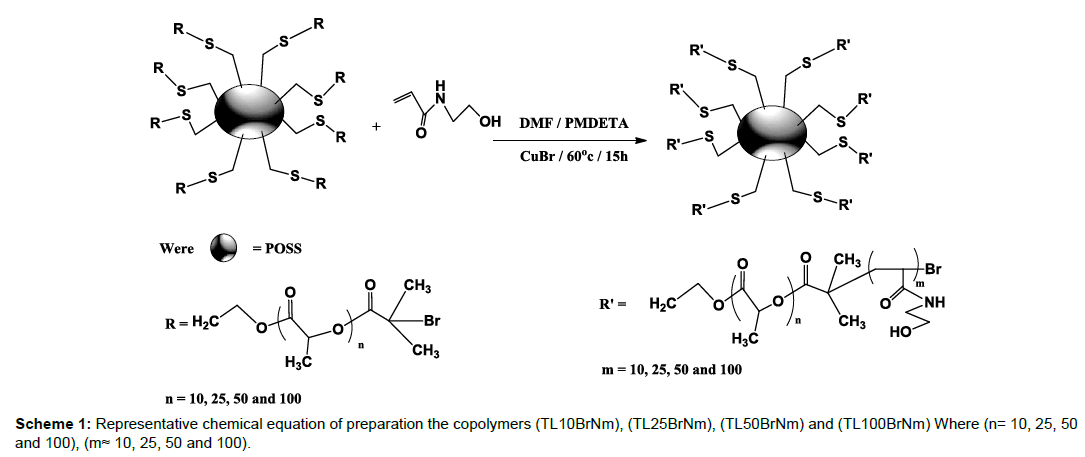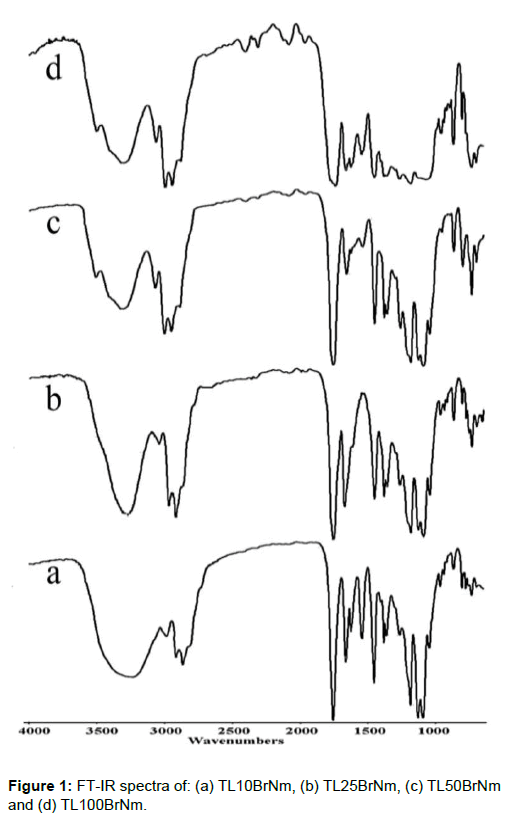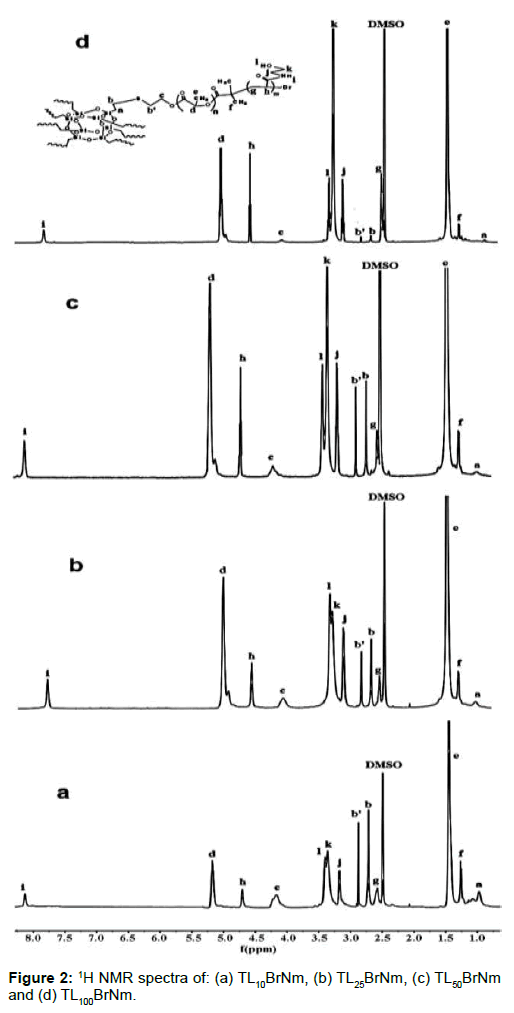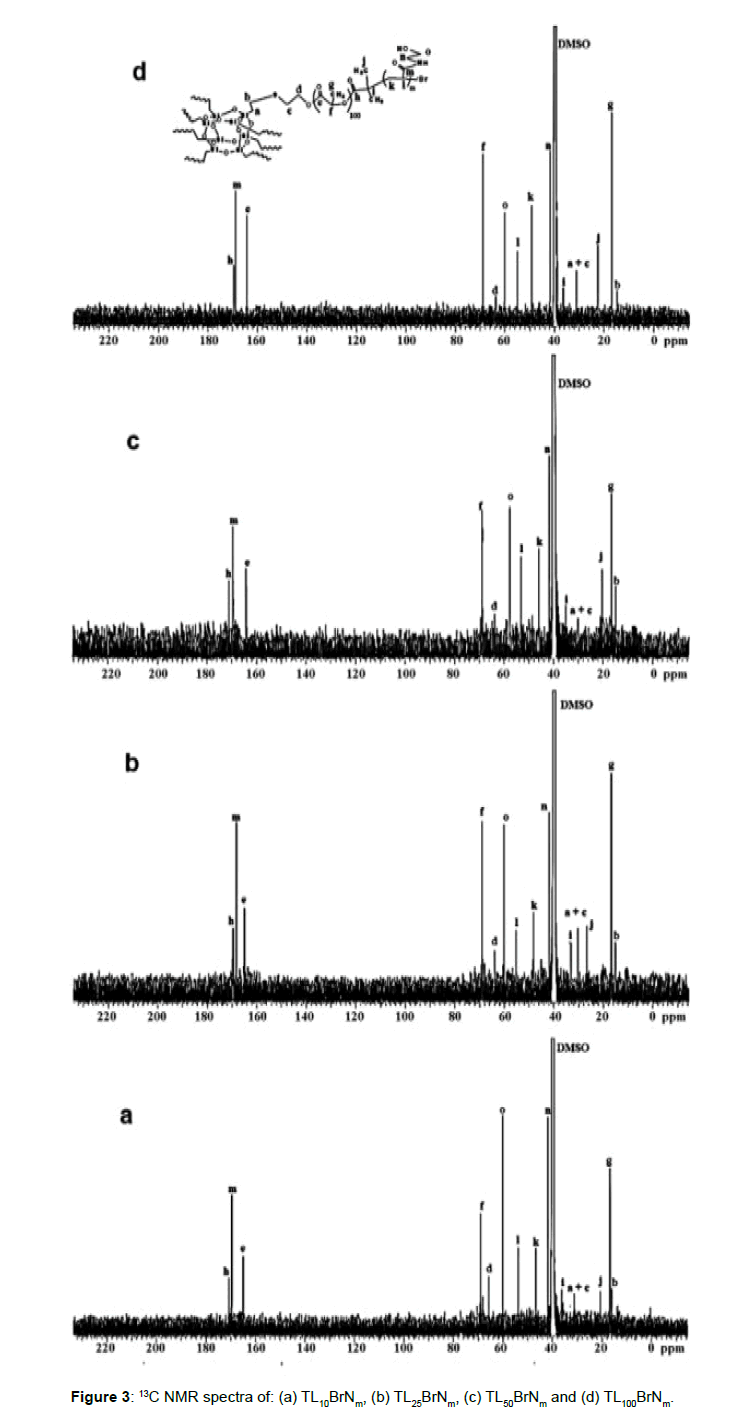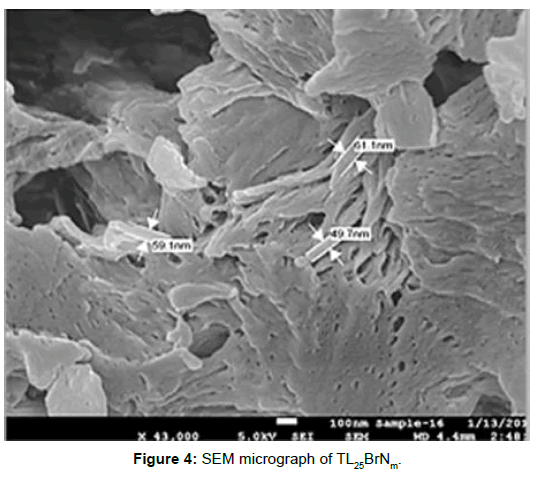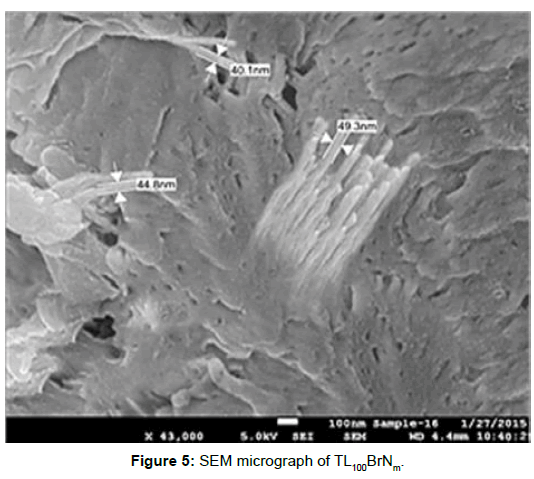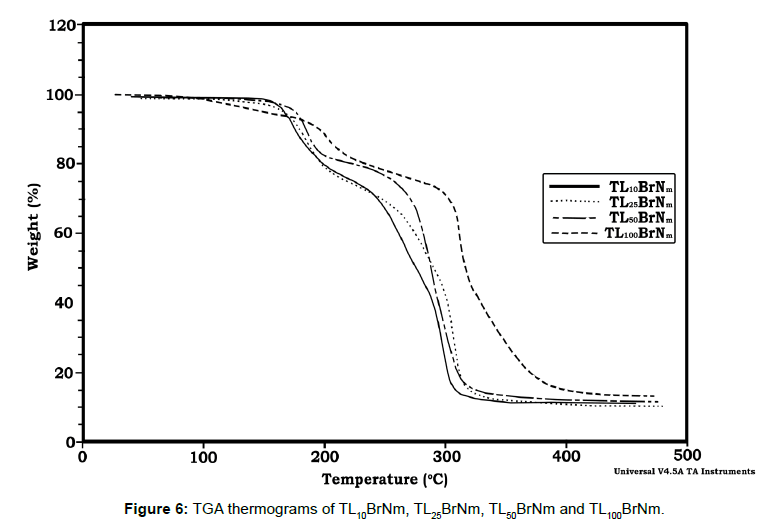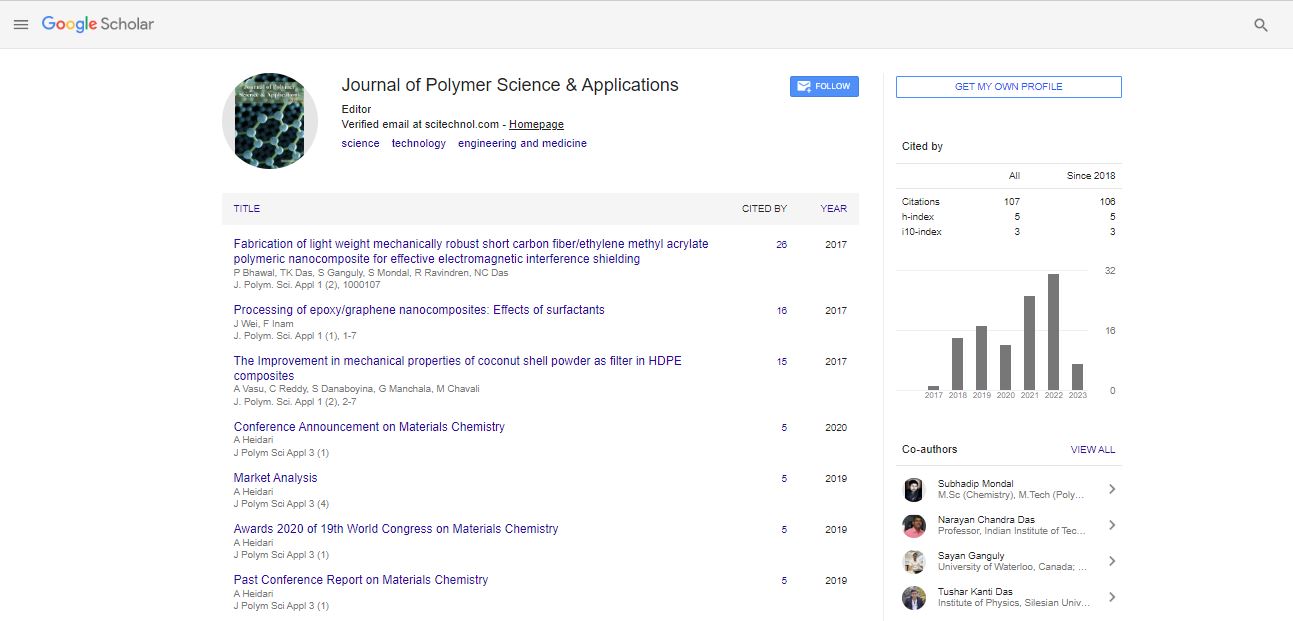Research Article, J Polym Sci Appl Vol: 2 Issue: 1
Synthesis and Thermal Properties of Poly(Poss Lactide-B- N-Hydroxyethyl Acrylamide) Nanostar-Shape Block Copolymers
Hadi S. Al-Lami*, Baqer A. Al-Mayyahi and Athir M Haddad
Department of Chemistry, College of Science, University of Basrah, Basrah-Iraq
*Corresponding Author : Hadi S. Al-Lami
Department of Chemistry, College of Science, University of Basrah, Garmat Ali, Baghdad Street, Basrah, 61001-Iraq
E-mail: hadisalman54@yahoo.com
Received: October 06, 2017 Accepted: November 13, 2017 Published: November 17, 2017
Citation: Al-Lami HS, Al-Mayyahi BA, Haddad AM (2017) Synthesis and Thermal Properties of Poly (Poss Lactide-B- N-Hydroxyethyl Acrylamide) Nanostar- Shape Block Copolymers. J Polym Sci Appl 1:3.
Abstract
Over the recent few years, mechanistic developments in the field of Controlled “Living” Radical Polymerization (CRP) are reviewed, and have undergone notable development and has become one of the most capable and vigorous synthetic methods in modern polymer chemistry [1]. CRP is interesting from both scientific and industrial viewpoints, as the discovery of these reactions opened up a whole new world of possibilities regarding the design of novel polymeric architectures and compositions [2]. CRP means that a polymerization reaction, where no unwanted side reaction such as transfer or termination takes place, and where all polymer chains initiate simultaneously. Thus, the growing ends of the polymer chains are active indefinitely, and an ideal living system should yield polymers with predetermined molecular weight and narrow molecular weight distribution (Polydispersity Index, PDI = Mw/Mn) close to unity.
Keywords: Nanostructure; Star copolymer; L-Lactide; POSS; Hydroxyethyl acrylamide
Introduction
Over the recent few years, mechanistic developments in the field of Controlled “Living” Radical Polymerization (CRP) are reviewed, and have undergone notable development and has become one of the most capable and vigorous synthetic methods in modern polymer chemistry [1]. CRP is interesting from both scientific and industrial viewpoints, as the discovery of these reactions opened up a whole new world of possibilities regarding the design of novel polymeric architectures and compositions [2]. CRP means that a polymerization reaction, where no unwanted side reaction such as transfer or termination takes place, and where all polymer chains initiate simultaneously. Thus, the growing ends of the polymer chains are active indefinitely, and an ideal living system should yield polymers with predetermined molecular weight and narrow molecular weight distribution (Polydispersity Index, PDI = Mw/Mn) close to unity.
Among the controlled radical polymerization processes, Atom Transfer Radical Polymerization (ATRP) was the most successful approach [3]. It controls via a reversible redox reaction between alkyl halides and transition metal complexes. The first report in ATRP was announced by Kato et al. using dichlorotris (triphenylphosphine) ruthenium (II), RuCl2(PPh3)3 as a catalyst system for the polymerization of methyl methacrylate (MMA) monomer initiated by carbon tetrachloride (CCl4). The second system reported by concerning polymerization of styrene catalyzed by CuCl/2,2’-bipyridyl (bpy) in the presence of 1-phenylethyl chloride as an initiator [4,5].
Moreover, Teodorescu and Matyjaszewski have studied the polymerization of methacrylamide using model R-haloamide based initiators to obtain well-defined block copolymers [6]. Furthermore, 2-chloropropionamide as an initiator was used in the polymerization of N-isopropylacrylamide monomers with a small polydispersity index to study the influence of end group functionalization on thermal properties of polymers [7]. A five-arm star-shaped poly(ethylene oxide) with terminal bromide groups was synthesized by and used as a macroinitiator for the atom transfer radical polymerization of tertbutyl acrylate (tBA), resulting in five-arm star-shaped poly(ethylene oxide)-blockpoly(tert-butyl acrylate) block copolymers, PEO-b- PtBA [8]. The polymerization proceeded in a controlled way using a copper (I) bromide/pentamethyldiethylenetriamine catalytic system in acetonitrile as solvent. The hydrolysis of the tBA blocks of the amphiphilic star-shaped PEO-b-PtBA block copolymer resulted in dihydrophilic star structures.
Herein, the work is demonstrating a synthesis of well-defined star-shaped block copolymers having eight armpoly(POSS lactideb- N- hydroxyethyl acrylamide) inorganic/organic polymers prepared by atom-transfer radical polymerization with the increasing of N-hydroxyethyl acrylamides (HEA).Thus, we believe that increasing the number HEA polymer chains of arms will reflect positively on the thermal stabilities of the copolymers and to improve their different application efficiencies since they appear to have nanofiber structures.
Experimental Section
Materials
N-hydroxyethyl acrylamide, copper(I) bromide, N,N,N’,N’’,N’’- pentamethyldiethylenetriamine,and diethyl ether (Assay ≥ 99 %) Anhydrous N,N-Dimethylformamide (DMF) (Assay ≥ 99.8%) were purchased fromSigma-Aldrich Company.
Instruments
The FTIR spectra were obtained by Nicolet IR-42, Mid-IR spectrometer using KBr pellets. 1H NMR and 13C NMR spectra were recorded by nuclear magnetic resonance spectroscopy using an Agilent DDR2 500MHz NMR spectrometer with dimethyl sulfoxide-d6 (Sigma-Aldrich, 99.9 atom % D) as a solvent. Copolymer molecular weights and molecular weight distributions (Mw/Mn) were determined using a Waters 1515 gel permeation chromatography (GPC) equipped with a refractive index detector (Waters 2412), DMF was used as the eluent at a flow rate of 1.0 mL/min and calibrated with the poly (methyl methacrylate) standard.
Computer controlled thermal analysis Instrumentals, TGA-Q500 V20.10 was used with heating rate 25˚C/min under a nitrogen atmosphere. Microscope images were taken to the prepared copolymers using Scanning Electron Microscopy type JEOL 7500F.
Methods
Preparation of thiolate POSS-lactideisobutyryl bromide (TLnBr)
Thiolate POSS-lactideisobutyryl bromide (TLnBr where n= 10, 25, 50 and 100) was prepared asdescribed in our previous work [9]. It was used as an ATRP initiator.
General procedure for synthesis of poly(POSS lactide-b-Nhydroxyethyl acrylamide) (TL10BrNm)
Thiolate POSS-lactide-isobutyryl bromide (0.4g, 0.00005mole), N-hydroxyethyl acrylamide (HEA) (0.8 g, 0.007 mole), copper (I) bromide (0.05g) and N,N,N’,N’’,N’’-pentamethyldi-ethylenetriamine (PMDETA) (20 μl) were dissolved in DMF (15 ml) at 60°C. After stirring for one hour under a nitrogen atmosphere, the reaction was stirred for a further 14 hours at 60°C. Afterward, the product is added slowly to 500 ml cold diethyl ether to precipitate the copolymer which was then filtered on a Buchner funnel and washed with diethyl ether and then the filtrate was dissolved in DMF (15ml). The copolymer was recovered through column chromatography on silica gel (200-400 mesh), DMF was removed by rotary evaporator and the copolymer was dried in vacuum oven at 25°C for 24 hours (Solid, 71% yield).
The same procedure was carried out to prepare the other block copolymers (TL25BrNm), (TL50BrNm) and (TL100BrNm). Table 1 shows the quantities of reactants used in the preparation and the chemical equations can be represented by the Scheme 1 of these copolymers.
| Copolymer Code | Amount of TLnBr | Amount of HEA | Wt. of CuBr (g) | Volume of PMDETA (µl) | Yield (%) | Physical state | ||
|---|---|---|---|---|---|---|---|---|
| Weight (g) | No. of moles | Weight (g) | No. of moles | |||||
| TL25BrNm | 0.4 | 0.00002 | 0. 8 | 0.007 | 0.05 | 20 | 70 | solid |
| TL50BrNm | 0.4 | 0.00001 | 0. 8 | 0.007 | 0.05 | 20 | 68 | solid |
| TL100BrNm | 0.4 | 0.000007 | 0. 8 | 0.007 | 0.05 | 20 | 72 | solid |
Table 1: The quantities of reactants used in the preparation of the copolymers.
Results and Discussion
Characterization
The FT-IR spectra of the new block copolymers (TL10BrNm, TL25BrNm, TL50BrNm, and TL100BrNm) are shown in Figure 1. The IR spectra of polymers that are prepared to have Thiolate POSS and L-lactide in their structure exhibited characteristic absorption bands due to the hydroxyl groups in the region of (3510 cm-1), and intense bands due to the (C=O) groups around (1750 cm-1). The spectra demonstrated an interestingabsorption peak at 1650 cm-1 assigned to the carbonyl of the amide group, and bands at around (3060 cm-1) assigned to (N-H) bonds indicating that the prepared macro initiator polymer reacted with N-hydroxyethyl acrylamide. It is also designatedthe characteristic absorption intense bands due to the C-Br bonds at (680 cm-1).
1H NMR and 13C NMR of (TL10BrNm, TL25BrNm, TL50BrNm, and TL100BrNm) copolymers were recorded on Agilent DDR2 500MHz NMR spectrometer using dimethyl sulfoxide-d6 (Sigma-Aldrich, 99.9 atom % D) as a solvent. Figures 2 and 3 represent 1H NMR and 13C NMR spectra for these synthesized star-shaped multi-armed block copolymers.
The 13CNMR spectra of copolymers are shown in Figure 3. The peaks at 18 (g), 68 (f) and 164 (e) ppm were assigned to the poly(LLactide) blocks. The peaks appeared at 42 (n), 49 (k) were attributed to two methylene units and at 55 (l) ppm for methane, carbon and at 169 (m) for carbonyl carbon of N-hydroxyethylacrylamide. All these spectroscopic examinations of the prepared copolymers verified the suggested structure of the prepared copolymers.
Copolymers molecular weights and molecular weight distributions (Mw/Mn) were determined using a Waters 1515 gel permeation chromatography (GPC) equipped with a refractive index detector (Waters 2412). DMF was used as the eluent solvent at a flow rate of 1.0 mL/min and calibrated with poly(methyl methacrylate) standard and the results obtained are shown in Table 2. These results revealed that nearly monodisperse copolymers with polydispersity indices (PDI) close to one were prepared, and demonstrated the convergence between the theoretical and practical values of polymers and block copolymers molecular weights.
| Polymer Code | Value of (m) | Mn (Daltons) | Mw (Daltons) | Polydispersity Index (PDI) |
|---|---|---|---|---|
| TL10BrNm | 13 | 20140 | 21670 | 1.08 |
| TL25BrNm | 30 | 44500 | 50770 | 1.14 |
| TL50BrNm | 60 | 86480 | 93180 | 1.08 |
| TL100BrNm | 115 | 165940 | 176660 | 1.06 |
Table 2: GPC resultsof the prepared star shaped block copolymers.
Microstructure
Morphologicalexamination of the preparedness copolymers was performed by using scanning electron microscope type JEOL 7500F supplied by JEOL company/USA. Figures 4 and 5 show the SEM micrographs of examining copolymers.The micrographs exhibited the presence of poly(L-lactide) nanofibers in a size ranging from (49.7-61.1) nm, Figure 4, and in a range of (40.1-49.3) nm, Figure 5, depending on the number of the lactide repeated units in the polymer chains, 25 and 100 units respectively.
Thermal Stability
Thermal stability of the prepared copolymers was studied using computer controlled thermal analysis instrument type TGA-Q500 V20.10. Figure 6 shows the resulted thermograms and the calculated thermal functions obtained from the thermal analysis like initiation and final decomposition temperatures, Ti and Tf, the rate of decomposition, the activation energy of the decomposition, 50% weight loss temperature T50 and char content for first decomposition and second decomposition are listed in Table 3. Thermal gravimetric analysis indicates that the initial decomposition temperature (Ti) ranges between 169-200°C for the first decomposition and between 239-318°C for the second decomposition.
| Copolymer Code | Decomp. Stage | Ti (°C) | Tf (°C) | Rate of Decomp. (%Wt/min) | Activation Energy (kJ.mol-1) | Temp. Range for Activation Energy (°C) | Wt% Loss (%) | Temp. of 50% Wt. Loss (°C) |
|---|---|---|---|---|---|---|---|---|
| TL25BrNm | 1stdecomp. | 169 | 202 | 0.78 | 0.020 | 161-175 | 21.18 | 275 |
| 2nddecomp. | 239 | 308 | 1.06 | 0.023 | 239-244 | 66.83 | ||
| TL25BrNm | 1stdecomp. | 166 | 209 | 0.43 | 0.028 | 166-180 | 23.64 | 285 |
| 2nddecomp. | 251 | 317 | 0.87 | 0.024 | 251-265 | 64.13 | ||
| TL50BrNm | 1stdecomp. | 176 | 214 | 0.43 | 0.031 | 175-190 | 18.86 | 290 |
| 2nddecomp. | 267 | 319 | 0.55 | 0.024 | 266-275 | 68.51 | ||
| TL100BrNm | 1stdecomp. | 200 | 236 | 0.29 | 0.063 | 200-215 | 35.01 | 315 |
| 2nddecomp. | 318 | 379 | 0.32 | 0.079 | 317-328 | 45.93 |
Table 3: Thermal stability functions of (TL10BrNm), (TL25BrNm), (TL50BrNm) and (TL100BrNm) copolymers.
Examining the TG curves obtained, Figure 6, has shown that the copolymers are composed of two segment types with very distinct thermal stabilities that can be ascribed to the poly(L-Lactide) and N-hydroxyethyl acrylamide segments. All the copolymers showed dual-step decomposition. The first stage of ~20 % weight loss around 160-180°C can be attributed to the elimination of water and formaldehyde molecules as a result of the cross linking reaction between free hydroxyl groups present in the polymer chains into methylol groups [10,11] as illustrated in the following equation where (R) represents a polymer chain:

and the second degradation step at a higher temperature (higherthan 138°C) can be related to the PLLA segment chain end ‘‘unzipping’’ mechanism and to N-hydroxyethyl acrylamide [12].
The excellent thermal stability of poly(POSS lactide-b-Nhydroxyethyl acrylamide) Nano block copolymers obtained may enhance new applications for these Lactide copolymers in different Bioengineering applications, especially in drug delivery or in tissue engineering might be subjected to or undergo modification and manipulation process [13,14]. This means that they should have higher thermal stability because most previous modification processes need temperatures higher than 70°C to be completed.
Conclusion
In summary, we reported for the well-defined new star shaped eight-armed block copolymers composed from POSS Lactide and N-hydroxyethyl acrylamide, and they were successfully prepared by atom transfer radical polymerization. Spectroscopic examination by FTâ€ÂIR, 1H NMR and 13C NMR verified the suggested copolymer structures. GPC results also revealed that all the copolymers are of nearly monodisperse with very narrow distributions accompanied by nanofiber structures as shown by SEM micrographs and their sizes are affected by the length of lactide polymer chains. The thermal gravimetric results showed that the initial and final decomposition temperatures for the preparing block copolymers increased with the increasing of lactide repeated units, whereas the rate of decompositions decreased with the increasing of lactide repeated units.
References
- Braunecker WA,Matyjaszewski K (2007) Controlled/living radical polymerization: Features, developments, and perspectives.Prog Polym Sci 32: 293-146.
- Pintauer T, Matyjaszewski K (2008) Atom transfers radical addition and polymerization reactions catalyzed by ppm amounts of copper complexes. Chem Soc Rev 37: 1087-1097.
- Fors BP, Hawker CJ (2012) Control of a living radical polymerization of methacrylates by light. Angew Chem Int Ed 51: 8850-8853.
- Kato M, Kamigaito M, Sawamoto M, Higashimura T (1995) Polymerization of methyl methacrylate with the carbon tetrachloride /dichlorotris(triphenylphosphineruthenium(II))/methylaluminumBis(2,6-di-tert butylphenoxide) initiating system: Possibility of living radical polymerization. Macromolecules 28: 1721-1723.
- Wang JS, Matyjaszewski K (1995) Control1ed living radical polymerization. Atom transfer radical polymerization in the presence of transition-metal complexes. J Amer Chem Soc, 117: 5614-5615.
- Teodorescu RM, Matyjaszewski K (1999) Atom transfer radical polymerization of (meth)acrylamides. Macromolecules, 32: 4826-4831.
- Xia Y, Burke NAD, Stöver HDH (2006) End group effect on the thermal response of narrow-disperse poly(N-isopropylacrylamide) prepared by atom transfer radical polymerization. Macromolecules 39: 2275-2283.
- Kul D, Tenhu H, Renterghem LMV, Yilmaz SS, Meier MAR, et al. (2008) Encapsulation and release by star-shaped block copolymers as unimolecular nano containers. J PolymSci Part A: Polym Chem, 46: 650-660.
- Al-Mayyahi BAA, Haddad AM, Al-Lami HS (2017) Characterization and thermal stability of nano eight arm copolymers synthesized by atom transfer radical polymerization, Karbala Intern. J Modern Sci 3: 83-92.
- Yocum RH, Nyquist EB (1974) Functional monomers. J Polym Lett Edition, 12: 359-359.
- Díez-Peña E, Quijada-Garrido I, Frutos P, Barrales-Rienda JM (2002) Thermal properties of cross-linlked poly(N-isopropylacrylamide) [P(N-iPAAm)], poly(methacrylic acid) [P(MAA)], their random copolymers [P(N-iPAAm-co-MAA)], and sequential interpenetrating polymer networks (IPNs). Macromolecules 35: 2667-2675.
- Penco M, Bignotti F, Sartore S, D’Antone S, D’Amore A (2000) Multi block copolymers based on segments of poly(D,L-lactic-glycolic acid) and poly(ethylene glycol) or poly(ɛ-caprolactone): A comparison of their thermal properties and degradation behavior. J Appl Polym Sci 8: 1721-1728.
- Dhandayuthapani D, Yoshida Y, Maekawa T, Sakthi Kumar D (2011) Polymeric scaffolds in tissue engineering application: A review. Intern J PolymSci 2011:1-19.
- Ribeiro C, Sencadas V, Correia DM, Lanceros-Méndez S (2015) Piezoelectric polymers as biomaterials for tissue engineering applications. Colloids and Surfaces B: Biointerfaces 136: 46-55.
 Spanish
Spanish  Chinese
Chinese  Russian
Russian  German
German  French
French  Japanese
Japanese  Portuguese
Portuguese  Hindi
Hindi 